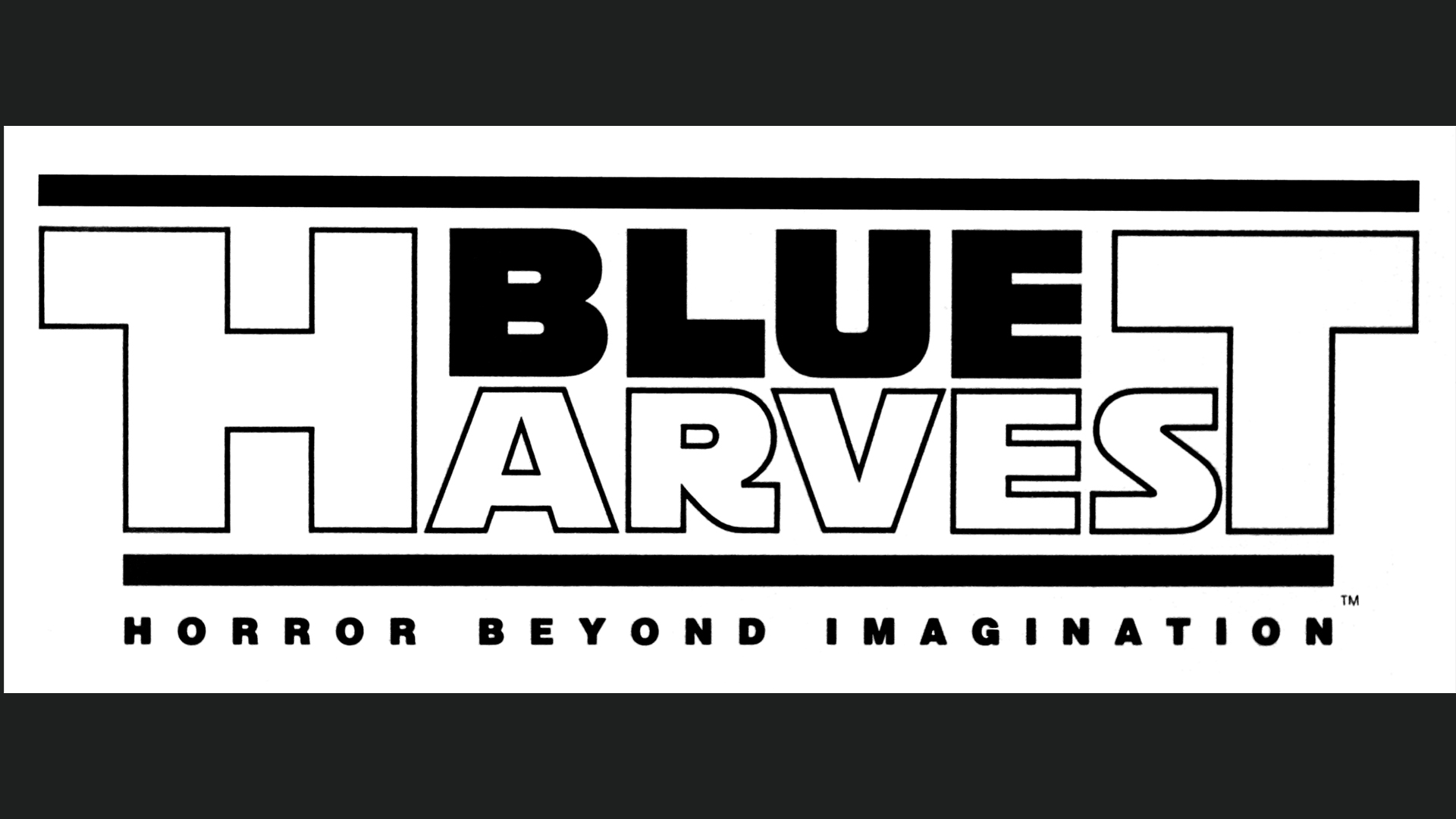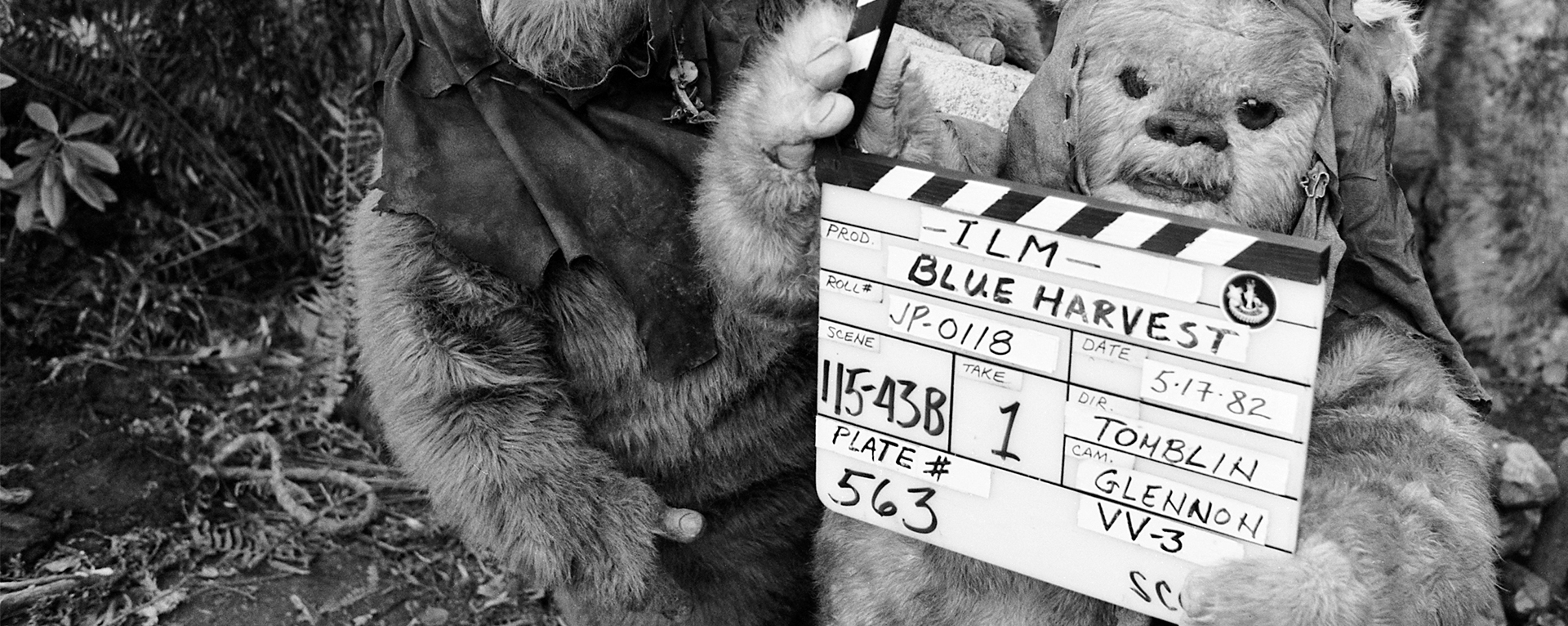Star Wars Celebration Panel Preview: The 40-Year History of Blue Harvest
Discover some gems of Lucasfilm history on Sunday at the University Stage.
With Star Wars Celebration Europe just around the corner, there’s been plenty of last-minute tasks to attend to before employees at our San Francisco headquarters make their way to ExCel London. For two of our company historians, this has included work on the panel, “40 Years Later: The History Behind Blue Harvest,” set for this Sunday, April 9 at 11:00 AM on the University Stage.
Perhaps the most famous movie Lucasfilm has never made, Blue Harvest was in fact a codename used by the company during production of Star Wars: Return of the Jedi (1983), now celebrating its 40th anniversary in 2023. To maintain secrecy while filming in the United States, they devised a non-existent horror film with the tagline, “Horror Beyond Imagination.” It was all intended to keep local costs from inflating and curious fans from trying to get too close to the set.
After completing principal photography in the United Kingdom, the Return of the Jedi crew spent a number of weeks at two exterior locations in opposite corners of California. The first was in the far southeast, near the stateline with Arizona, in the sand dunes of Buttercup Valley. Jabba the Hutt’s sail barge and the memorable Sarlacc Pit was constructed there near a popular recreation spot used for dune-buggying. Afterwards, the cast and crew relocated far to the northwest near the stateline with Oregon to a secluded redwood forest that became the site of the Imperial bunker on Endor.
Lucasfilm’s publicity department and key production staff used the Blue Harvest name throughout the operation, telling local property owners, officials, press, and fans that their production was a small Lucasfilm movie entirely separate from the new Star Wars entry being made overseas. It wasn’t entirely successful, however, as details about the reality of the movie being made became evident. Fans traveled to the California desert to glimpse their favorite actors and local press spread the word, quickly picked up by national outlets.
Deeper research into a subject like Blue Harvest always begins with the existing official sources, in this case the books on the making of Return of the Jedi by John Philip Peecher and J. W. Rinzler, respectively. Their foundational work sets the standard for Lucasfilm historians today. From there, it’s about turning over stones left unexamined, often in the form of rare corporate documents, obscure press clippings, and even archival behind-the-scenes footage.
By integrating the publicly available materials with internal sources, a deeper story is revealed, one about the clamor of the American public to know as much as they could about the newest Star Wars adventure, and Lucasfilm’s thoughtful consideration behind the scenes. Their challenge was to manage the overwhelming interest in the film in order to allow George Lucas and the filmmaking team to focus on the task of completing it. Every role at Lucasfilm is about serving the storytelling process.
The panel at Celebration will take the audience from the origins of this unusual idea for a codename through its application and reception by the fans, revealing Lucasfilm’s decisions to ultimately embrace those who went out of their way to see their favorite saga being made. A handful of passionate viewers from San Diego were among those to make the trek to the California desert where they met a number of the film’s starring actors like Carrie Fisher, Mark Hamill, and Billy Dee Williams.
That same group of fans would share their memories with Bantha Tracks, the newsletter of the Official Star Wars Fan Club, which was operated directly by Lucasfilm. They were (and are) known as the “Blue Harvest Gang,” making t-shirts inspired by those worn by the film crew, and becoming pillars of their local fan community. And in the depths of Lucasfilm’s archives, behind-the-scenes footage of the Blue Harvest Gang on location has been unearthed for a rare showing at Celebration. It’s a bit of a time-capsule, a window into the minds of fans’ in the original trilogy era.
Panels like these cannot be accomplished without the tireless effort of Lucasfilm’s archival and media asset teams, who deftly care for the materials that bring the company’s history to life. Everything at Lucasfilm is a collaboration, and that includes the support of the fans who make it all possible. Sharing these stories at an event like Celebration is a chance to bring our work directly to the audience, and allow them to share in the process.
—


